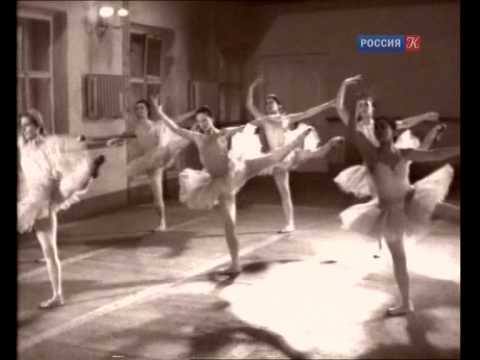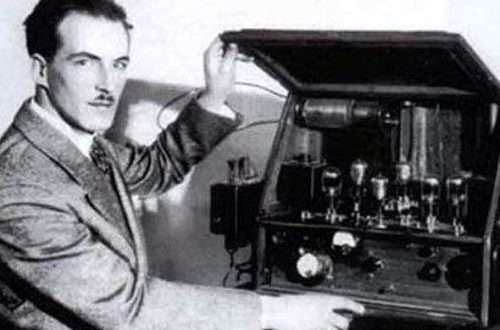Agrippina Vaganova: from the “martyr of ballet” to the first professor of choreography
All her life she was considered a simple dancer, receiving the title of ballerina a month before her retirement. Moreover, her name is on a par with such great women as Matilda Kshesinskaya, Anna Pavlova, Olga Spesivtseva. Moreover, she was the first professor of classical dance in Russia, having trained a whole galaxy of the most brilliant dancers of the 6th century. The Academy of Russian Ballet in St. Petersburg bears her name; her book “Fundamentals of Classical Dance” has been reprinted XNUMX times. The phrase “school of Russian ballet” for the ballet world means “Vaganova’s school,” which makes it especially surprising that the girl Grusha was once considered mediocre.
The young student was not pretty; her face had the stern expression of a person with a hard life, large feet, ugly hands – everything was completely different from what was valued when admitted to a ballet school. Miraculously, Grusha Vaganova, who was brought to the exams by her father, a retired non-commissioned officer, and now a conductor at the Mariinsky Theater, was accepted as a student. This made life much easier for the rest of the family, which included two more children, because now it was supported at public expense. But the father soon died, and poverty fell on the family again. Vaganova was terribly ashamed of her poverty; she did not have funds even for the most necessary expenses.
During her debut on the imperial stage, Pear… fell down the stairs. She was in such a hurry to go on stage for the first time that she slipped and, hitting the back of her head on the steps, rolled down the stairs. Despite the sparks from her eyes, she jumped up and ran to the performance.
After joining the corps de ballet, she received a salary of 600 rubles a year, which was barely enough to make ends meet. But the workload was monstrous – Pear was involved in almost all ballets and operas with dance scenes.
Her passion for dance, inquisitiveness during classes, and hard work were boundless, but did not help in any way to get out of the corps de ballet. Either she is the 26th butterfly, then the 16th priestess, then the 32nd Nereid. Even the critics, who saw in her the makings of an extraordinary soloist, were perplexed.
Vaganova didn’t understand this either: why some people get roles with ease, but she does so after a series of humiliating requests. Even though she danced academically correctly, her pointe shoes easily lifted her in pirouettes, but the chief choreographer Marius Petipa had dislike for her. On top of that, Grusha was not very disciplined, which made her a frequent cause of penalty reports.
After a while, Vaganova was still entrusted with solo parts. Her classical variations were virtuosic, chic and brilliant, she demonstrated miracles of jumping technique and stability on pointe shoes, for which she was nicknamed “the queen of variations.”
Despite all her ugliness, she had no end to admirers. Bold, courageous, restless, she easily got along with people and brought an atmosphere of relaxed fun to any company. She was often invited to restaurants with gypsies, for walks around St. Petersburg at night, and she herself loved the role of a hospitable hostess.
From the entire host of admirers, Vaganova chose Andrei Aleksandrovich Pomerantsev, a member of the board of the Yekaterinoslav Construction Society and a retired lieutenant colonel of the railway service. He was her complete opposite – sedate, calm, gentle, and also older than her. Although they were not officially married, Pomerantsev recognized their born son by giving his last name. Their family life was measured and happy: a sumptuous table was set for Easter, and the Christmas tree was decorated for Christmas. It was near the installed Christmas tree on New Year’s Eve 1918 that Pomerantsev would shoot himself… The reason for this would be the First World War and the subsequent revolutionary upheavals, to which he could not adapt and survive.
Vaganova was carefully brought to retirement on her 36th birthday, although sometimes she was allowed to dance in performances where she still demonstrated her full strength and brilliance.
After the revolution, she was invited to teach at the School of Choreography Masters, from where she moved to the Leningrad Choreographic School, which became her life’s work. It turned out that her true calling was not to dance herself, but to teach others. A fragile woman in a black tight skirt, a snow-white blouse and with an iron will raised her students to be personalities and artists. She created a unique fusion of French grace, Italian dynamism and Russian soul. Her “Vaganova” methods gave the world standard classical ballerinas: Marina Semenova, Natalya Dudinskaya, Galina Ulanova, Alla Osipenko, Irina Kolpakova.
Vaganova sculpted not only soloists; the corps de ballet of the Leningrad Academic Opera and Ballet Theater named after Kirov, recognized as the best in the world, was filled with her graduates.
Neither the years nor the illness affected Agrippina Vaganova. With every part of her she wanted to work, create, teach, devoting herself to her favorite work without reserve.
She passed away at the age of 72, but still continues to live in the eternal movement of her beloved ballet.


Watch this video on YouTube



